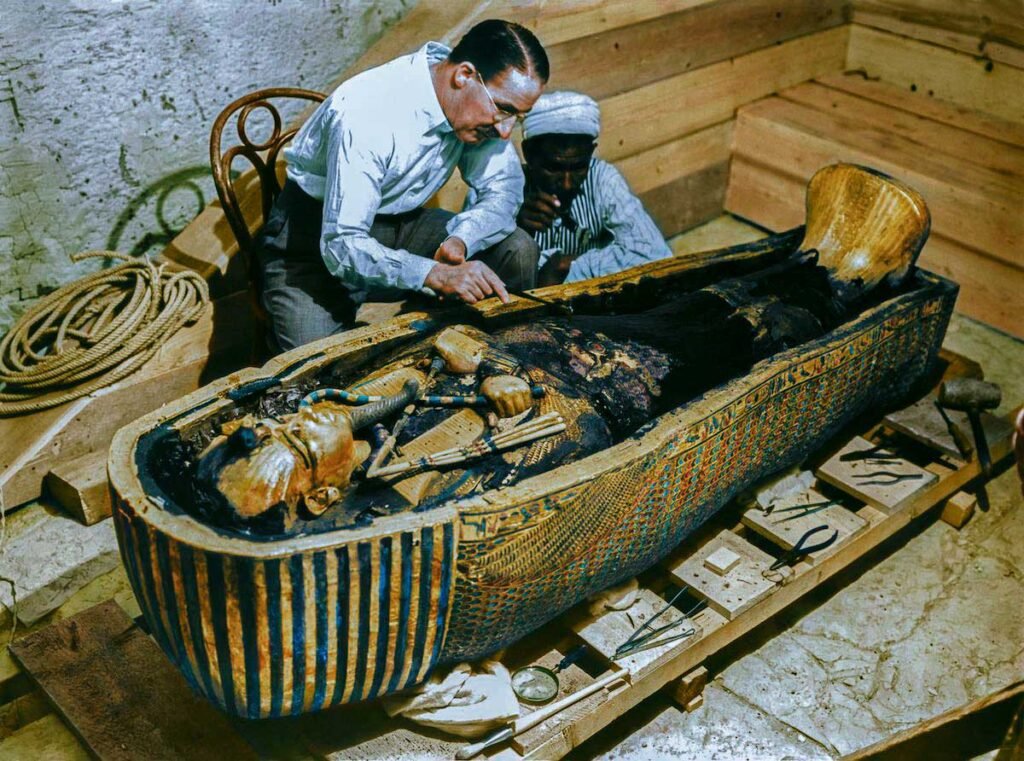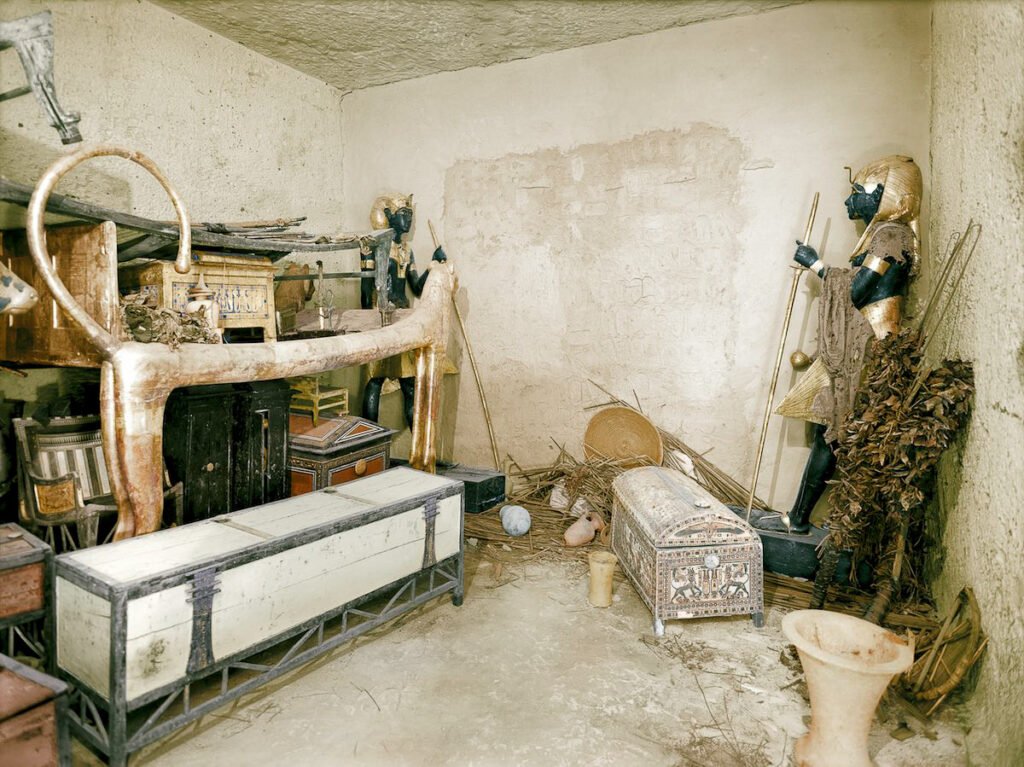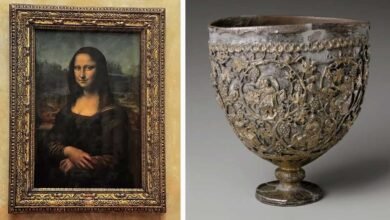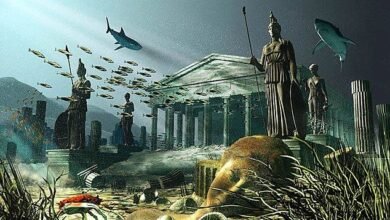
Exploring the Fascinating Story of Tutankhamun’s Tomb Discovery
The mystery surrounding King Tutankhamun’s tomb has captivated the world for nearly a century. Does it contain hidden chambers, possibly the final resting place of Queen Nefertiti? The answer remains elusive, sparking debates among experts. But before delving into the present-day intrigue, let’s journey back to the remarkable discovery of King Tut’s tomb in the 1920s.
The Quest Begins
The story begins with Howard Carter, the English Egyptologist whose relentless search for Tutankhamun’s tomb finally paid off in 1922 after five years of tireless effort. As he and his team meticulously cleared the passage debris obstructing the tomb’s entrance, they faced an anxious moment when they made their first breach.
With trembling hands, Carter made a tiny breach in the upper left-hand corner of the doorway. What lay beyond was a realm of darkness and blank space, unlike the passage they had just cleared. The tension was palpable as Lord Carnarvon, unable to contain his anticipation, inquired, “Can you see anything?” Carter’s response, “Yes, wonderful things,” resonated with awe and excitement.

Image from -> openculture.com
A Treasure Trove
The subsequent exploration of Tutankhamun’s tomb revealed a treasure horde that has since captivated the world’s imagination. Between 1923 and 1925, Harry Burton, the Metropolitan Museum of Art photographer, documented the 5,298 items found in the tomb. These items needed to be meticulously recorded, sketched, and photographed.

Image from -> openculture.com
A Journey into Color
These historical photographs, originally in black and white, have been colorized by Dynamichrome, bringing to life the splendor of Tutankhamun’s treasures. They offer a vivid glimpse into the opulent world of ancient Egypt, as discovered by Howard Carter and his team.
Burton’s Vital Role
Harry Burton acted as “Carter’s eyes and memory.” He tirelessly moved between the discovery site, his laboratory set up in the tomb of King Seti II, and an improvised darkroom in the neighboring tomb KV 55. The result of his labor was 2,800 large-format glass negatives, documenting every find, its location within the tomb, and each step of the excavators’ work with unparalleled precision.

Image from -> openculture.com
A Decade of Preservation
The process of removing these ancient treasures from Tutankhamun’s tomb spanned a decade. Preserving organic artifacts such as textiles, fragile wooden furniture, and footwear presented a significant challenge. Carter and his team, understanding the historical importance of their discovery, took great care in handling and cataloging these items.

Image from -> openculture.com
The Ongoing Battle Against Looting
While Tutankhamun’s tomb and its contents were preserved, many other Egyptian antiquities have fallen victim to looting and trafficking. Zahi Hawass, Egypt’s renowned archaeologist, notes that nearly two-thirds of Egyptian antiquities were smuggled abroad in recent years. Such trafficking threatens Egypt’s rich historical legacy.
The Quest for Hidden Chambers Continues
The intrigue surrounding hidden chambers in Tutankhamun’s tomb persists. While some experts believe there is a “90% chance of hidden chambers,” others, including Zahi Hawass, remain skeptical. The only way to resolve this debate definitively is to dig through the tomb’s northern wall, a prospect fraught with risks.

Image from -> openculture.com
A Legacy of Wonder
As we marvel at the colorized photos of Tutankhamun’s treasures, we are reminded of the enduring wonder and mystery of ancient Egypt. While the contents of Tutankhamun’s tomb continue to captivate us, we must also remember the ongoing battle to protect Egypt’s cultural heritage from the ravages of time and illicit trafficking.
The legacy of Tutankhamun, his tomb, and the treasures within continue to inspire awe and curiosity, reminding us of the importance of preserving and cherishing our shared human history.

Image from -> openculture.com
References:




